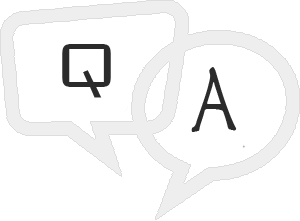
- Biology - Home
- Biology - Classification of Organisms
- Biology - Cell Division
- Biology - Virus
- Biology - Bacteria
- Biology - Fungi
- Biology - The Roots
- Biology - The Plant Stem
- Biology - The Plant Leaf
- Biology - The Flowers
- Biology - The Fruit
- Biology - Plant Diseases
- Biology - The Blood
- Biology - Blood Group
- Biology - Human Brain
- Biology - Skeleton System
- Biology - Endocrine System
- Biology - Endocrine Diseases
- Biology - Carbohydrate
- Biology - Proteins
- Biology - Fats
- Biology - Vitamins
- Biology - Minerals
- Biology - Genetic Terminology
- Organisms & their Chromosome Counts
- Biology - Viral Diseases
- Biology - Bacterial Diseases
- Branches of Biology
- Inventions & Discoveries in Biology
- Nobel Prize in Biology
Biology Part 2 Online Quiz
Following quiz provides Multiple Choice Questions (MCQs) related to Biology. You will have to read all the given answers and click over the correct answer. If you are not sure about the answer then you can check the answer using Show Answer button. You can use Next Quiz button to check new set of questions in the quiz.

Q 1 - Match the following:
DiseaseOrganism
a) Cholera1. Bacterium
b) Mumps2. Fungus
c) Ringworm3. Protozoa
d) Sleeping sickness4. Virus
Choose the correct answer from the codes given below:
abcd
Answer : A
Explanation
N/A
Q 2 - Which among the following is the heaviest muscle in the human body?
Answer : A
Explanation
The Gluteus Maximus or simply buttock muscle is the heaviest muscle in the body.
Q 3 - Consider the following statements:
1. The gall bladder is attached to the liver and stores bile produced by the liver.
2. The gall bladder has the storage capacity of 60 to 90 ml of bile.
Choose the correct answer from the codes given below:
Answer : A
Explanation
The gall bladder has the storage capacity of 30 to 60 ml of bile.
Q 4 - Consider the following statements:
1. The bone in the human body consists of 80% solid materials and 20% water.
2. The solid materials in bone is largely derived from cartilage.
Choose the correct answer from the codes given below:
Answer : C
Explanation
The bones are hard because of the impregnation of salts including carbonates and phosphates of lime.
Q 5 - Which among the following correctly defines the term Dendrology?
A - Scientific study of buds and flowers
Answer : B
Explanation
N/A
Q 6 - The eye part just behind the fence is filled with
Answer : C
Explanation
Vitreous humor is the transparent jelly-like tissue that fills the eyeball behind the lens.
Q 7 - The temperature and humidity of the air we breathe is adjusted in
Answer : B
Explanation
N/A
Q 8 - Consider the following statements:
1. There is cytoplasmic region inside the prokaryotic cell that contains the genome known as DNA.
2. The genetic material is freely found in the cytoplasm.
Choose the correct answer from the given codes:
Answer : C
Explanation
N/A
Q 9 - Which among the following is a physical basis of the life?
Answer : C
Explanation
Protoplasm is composed of the mixture of some small molecules including ions, amino acids, monosaccharides, and water.
Q 10 - Which among the following is the largest mammal?
Answer : A
Explanation
Blue whale is the largest mammal on the earth.
Q 11 - Which among the following is the correct proportion of red blood corpuscles and white blood corpuscles in a human body?
Answer : C
Explanation
N/A
Q 12 - The small upper part of the human intestine located next to the stomach is known as:
Answer : B
Explanation
N/A
Q 13 - Which among the following is the causal factor of AIDS?
Answer : A
Explanation
AIDS stands for Acquired Immune Deficiency Syndrome.
Answer : B
Explanation
Fructose, also known as fruit sugar, is a simple ketonic monosaccharide, which found in many plants.
Q 15 - Consider the following statements:
1. Petals and sepals are collectively known as tepals.
2. Stigma is the receptive surface area of the carpel.
Choose the correct answer from the codes given below:
Answer : C
Explanation
N/A
Answer : A
Explanation
An electroencephalogram or simply EEG is a test, which is used to detect the abnormalities in the brain.
Q 17 - Which among the following diseases is not a viral disease?
Answer : A
Explanation
Cancer is an abnormal growth of cells.
Q 18 - Which among the following is the most essential requirement for a seed germination?
Answer : B
Explanation
N/A
Q 19 - Which among the following enzymes converts lactose to glucose?
Answer : C
Explanation
Lactase is produced in intestinal glands.
Q 20 - Which among the following vitamins is essential for the healthy skin?
Answer : A
Explanation
Vitamin A is anti-infective.